Romesh Dodangoda on simple recording hacks and capturing the spirit of metal
Celebrated for his immaculate rock and metal recordings, the producer and mixer has made records with the likes of Bring Me The Horizon and Motörhead. Now he’s sharing his knowledge with a community of studio pros.
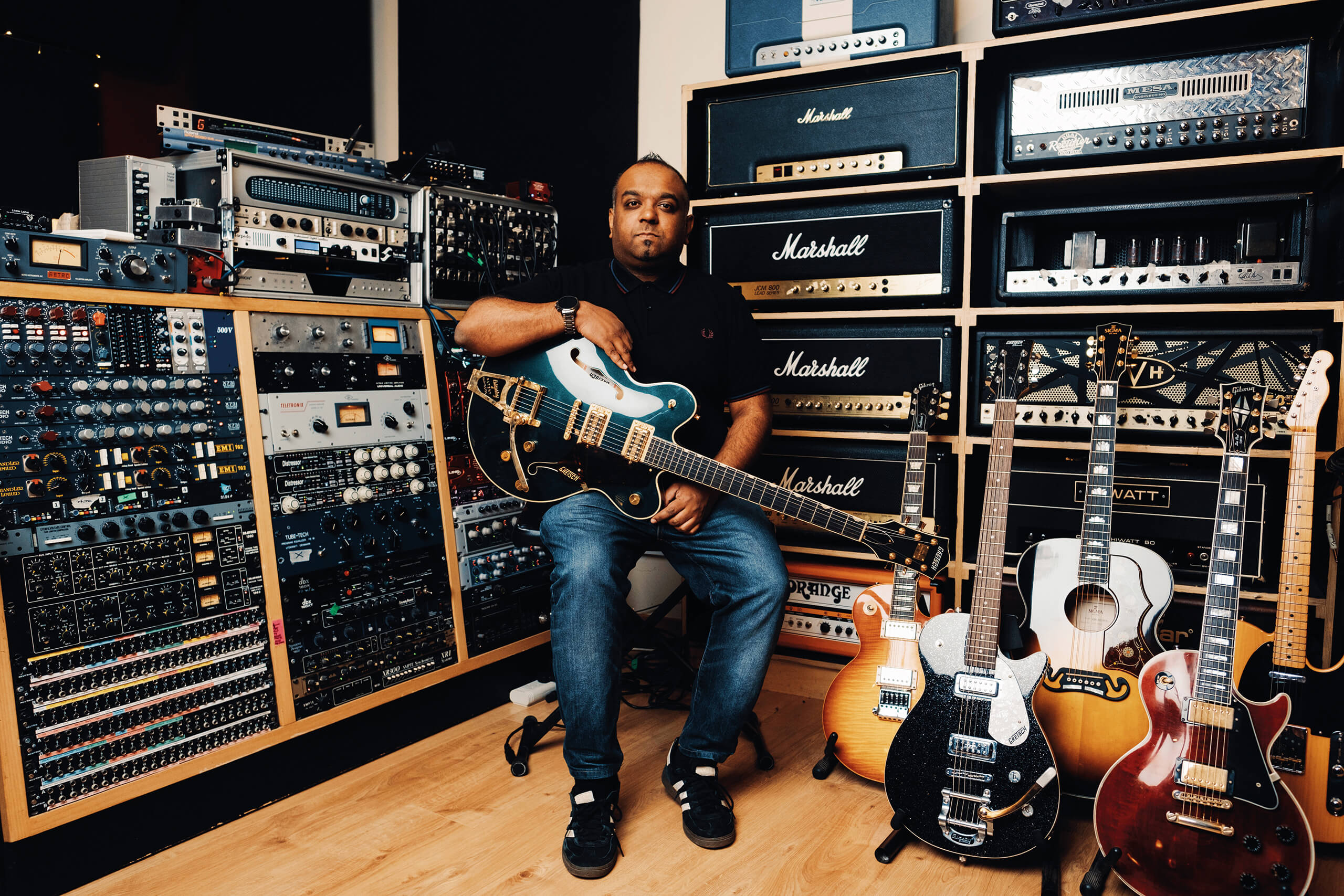
There’s an art to capturing a good rock sound. Though we’re often advocates for the simplicity of in-the-box production, if you want to bottle the flavours of flesh-and-blood live instrumentalists, you’re going to need a bit of space. Not to mention the right tools to bring out the band’s character.
Welsh-born Romesh Dodangoda is one of the industry’s foremost authorities on the subject, with a CV that takes in some of the loudest and most acclaimed rock acts of recent years. From Bring Me The Horizon and Funeral for a Friend to the mighty Motörhead, Romesh has recorded, mixed and in some cases mastered them to great success. The latest Bring Me The Horizon record, Amo, which Romesh recorded, received a prestigious Grammy nomination for Best Rock Album.
With this genre, says Romesh, you have to be willing to bend and even break the rules. There are, however, a few methods that recur from project to project. “When you start getting into the heavier genres, one of the prime factors is aggression and how to make things sound big, wide and aggressive,” he says. “Volume comes into it. With the heavier artists, I still like it to sound fairly natural. There’s a lot of heavier records that are quite processed-sounding, which totally works, but I try and make it sound as real and like a band playing as possible.”
Axe to grind
Romesh’s passion for production stemmed from his young fascination with the genre’s premier instrument. “It all started when I picked up a guitar,” he says. “I used to be in a band and at that point I was madly in love with Oasis. As most guitarists do, I went on a journey of trying to find the right sounds from the speakers, and that just kickstarted this whole fascination with audio. Later, I started buying small bits of stuff to record myself and make demos with. This led me to make a small studio in my house. I started working with local singer-songwriters, and I gradually learnt more about the recording process.”
Being a rock-oriented producer wasn’t necessarily Romesh’s goal back then but it’s a route that he went down naturally. “It came from the whole guitar thing,” he says. “Recording other people’s stuff got me into it. Even when I was a guitarist, I hated almost everything else about being in a band but loved going to the studio, which was always fascinating to me. Now, I work in rock music but I do some pop as well. It wasn’t a conscious thing. I just started to work with artists that naturally went in this direction. But, as a guitarist, I love rock. I like working on things I know I can bring something to.”
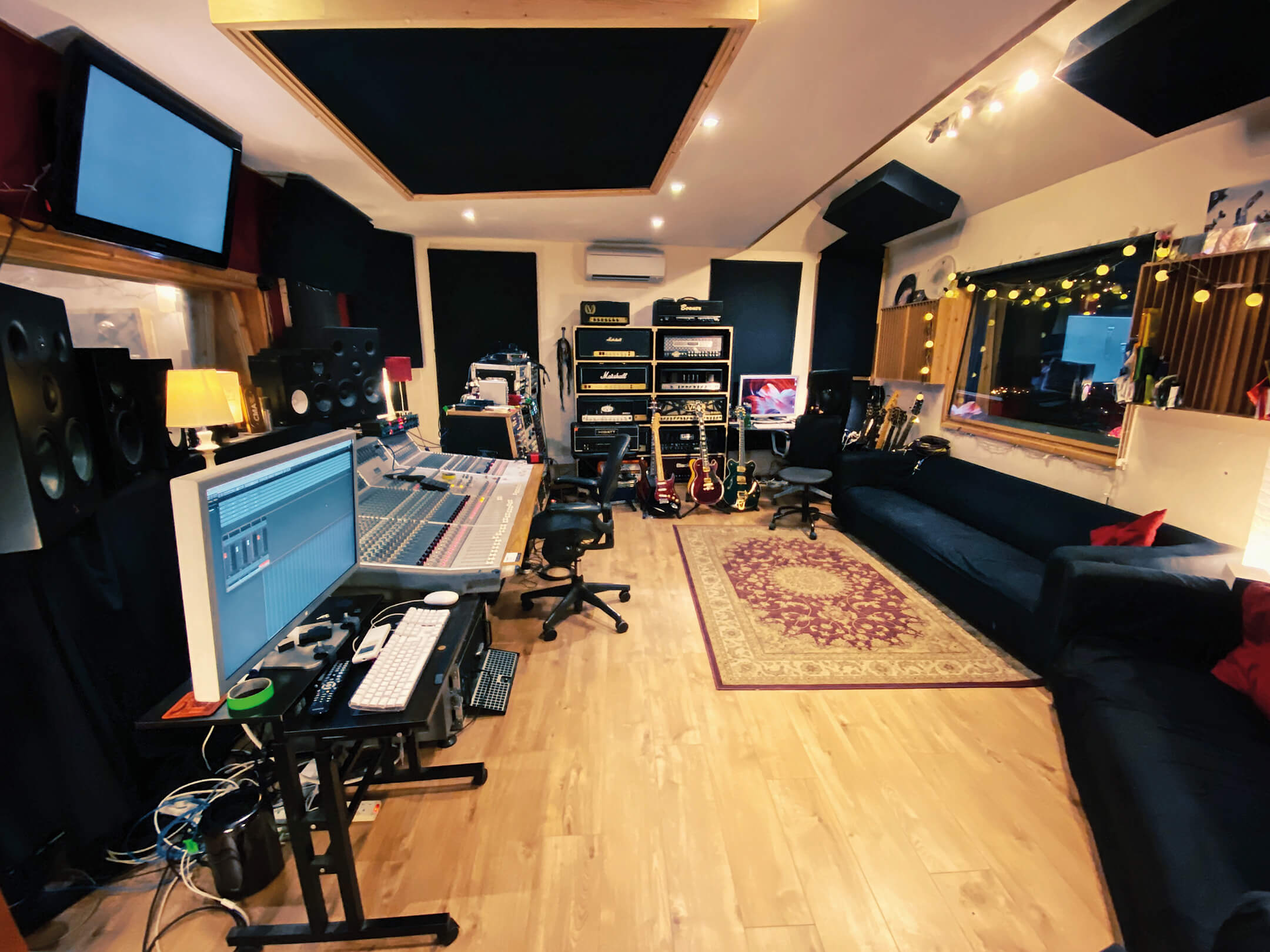
Crest of the wave
Established about 20 years ago, Romesh’s Cardiff-based Long Wave HQ is among the most gear-packed studios we’ve ever seen. Inside, you’ll find an enviable collection of outboard equipment and guitars, as well as enough amplifiers to seize the attention of several Millennium Stadiums. Despite the studio’s obvious appeal to gear geeks,
it remains a private space for Romesh.
“It was never intended to be a commercial place and that’s still how it is. It’s a studio for me, so I don’t have to hire a studio every time I want to do something. Everything is set up how I want it to be, so I can work really fast. I don’t want to have the artist sitting around waiting for things to happen. In my studio, things are patched in such a way that I can work quickly and get things done.”
Romesh elaborates on the layout. “I’ve got three rooms in Long Wave,” he says.
“There’s Studio A, which is my live room, where I do all my tracking. That’s based around an Audient ASP 8024 inline console. In terms of gear, there’s a lot of outboard here. There are plenty of pre-amps too. Some of my favourites include the Chandler TG2, the API 512c and the Heritage Audio 1073, which I love. When I’m recording, I use a lot of analogue outboard on the way in. My goal is for the sound to be pretty much there when it reaches the DAW, so that it doesn’t require much tweaking afterwards. Even for guitars, I have multiple mics but I sum them to one channel and record them as one. I like to commit and move on.”
“I don’t like the idea of the singer being behind a window. If they see people laughing but can’t hear it, it can affect them”
Romesh does this by having everything pass through his Antelope Audio Orion convertors, which are fed from his Audient desk’s multi-track outputs. It’s the same with the guitars. “I’m always taking a DI too,” says Romesh, “so if I need to, I can go back and re-amp it. I just don’t like seeing piles and piles of mics on the screen. It’s hard to manage. I prefer to go, ‘There’s the guitar sound’ and sum the mics to one. I’ve always done it like that. If I can make the session simpler, I will. It makes the mix process so much easier as the decision-making is done at the tracking stage.”
We’re just scratching the surface of Romesh’s studio. “I also have a lot of dynamics processors,” he says, “such as a Retro 176, a blue-and-black 1176, and some Empirical Labs Distressors and FATSOs. There’s the Tubetech EQs too, and I’ve just got these amazing new Roger Mayer 456s, which reproduce the sound of hitting tape. I’ve never heard anything quite like it. I’ve been recording everything I can through them. They make incredible things happen to cymbals on overhead mics. They make vocals sit in the mix so much better. It almost mixes itself. It’s like all that saturation and distortion helps things sound better.”
Long Wave’s Studio B functions as a mix room, as well as a small studio, where Romesh loves to record vocals in the same room as the singer. “I don’t like the idea of the singer being isolated behind a window,” he says. “It can be nerve-racking for them. I’ve been doing vocals in the same room for years. It’s more interactive and relaxed. You can have a laugh with your singer. If they’re behind glass and see everyone laughing and talking but can’t hear it, it can affect them. They give better vocal takes when you’re in the same room. Things like that can really make a vocal. Being in the same room and being able to communicate and sing lines to them is so much better. You feel like you’re working together.”
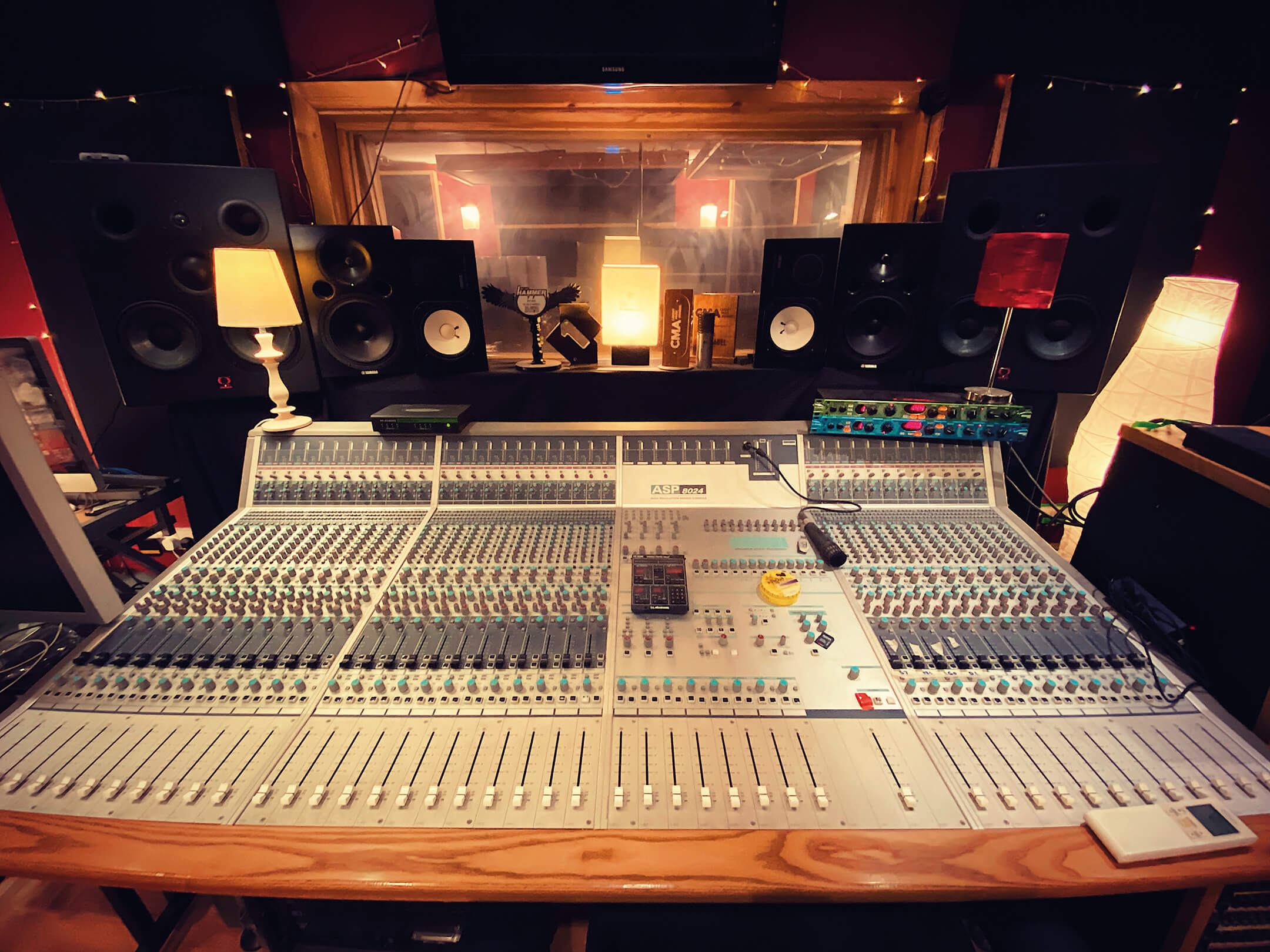
Follow the leader
Despite the range of recording options available, Romesh likes to keep things fundamentally focused on the band at hand’s unique sound requirements, and moving fast to accommodate their needs is essential. “The artist doesn’t really care what mic I’m using or what preamps I’ve got,” he says. “But I need a starting point. From there I can change. I’ve got a great assistant who’s been with me for a long time now. He knows exactly what I like and what I might want to start with. It means you can move fast with the band. Most of the time, my preamp switching creates a small difference. They’re all going to work – it’s just flavours and preferences.”
Romesh’s ready-to-rock jumping-off points tend to be similar for many of his clients, which means he can get a head start during sessions. “I have things pretty much turned up in the same way on the desk. I don’t even have to label the console anymore because I know that the guitars live on three, four and five, and the bass is on 17, 18 and 19. The problem is that, as producers, it’s hard to switch off that tech side and focus purely on what’s best for the song and whether the song is working. The more you simplify things and the less problems you have to solve on the technical side, the more you can focus on the song and the sonics and the arrangements.”
Despite the efficiency afforded to him by his own preferences and knowledge of his console, for Romesh, it’s important to cater to everyone’s individual needs rather than trying to apply the same process to everybody. “You might want some bands to play together initially to get the right vibe for the drums,” he says. “On some records, we might start with the stems from the demo, import them and build it that way. Everything is different. You need to understand where the band is coming from, what they want to achieve and how they like to work. My approach changes quite a lot.”
Does that flexible approach extend to arrangement suggestions too? “I’ll always get involved with arrangement stuff but I’m never forceful with my opinion. I’m there to try and steer the band towards what they’re after. It’s their record. It’s important to help guide them to where they want to go. I suggest things but I’m the first to admit if my ideas aren’t working.”
In terms of capturing this often extremely loud source material, there are a few mics that Romesh keeps close at hand, including a Flea 47, and a few from Latvia’s JZ Microphones. “I’ve been blown away by JZ’s V67 large-diaphragm condenser,” he says. “It’s become one of my main vocal mics. It floored me just how clear they are. I’m a big fan of using the Aston Halo for vocals as well, even in my treated room, I still use it as it makes a difference.”
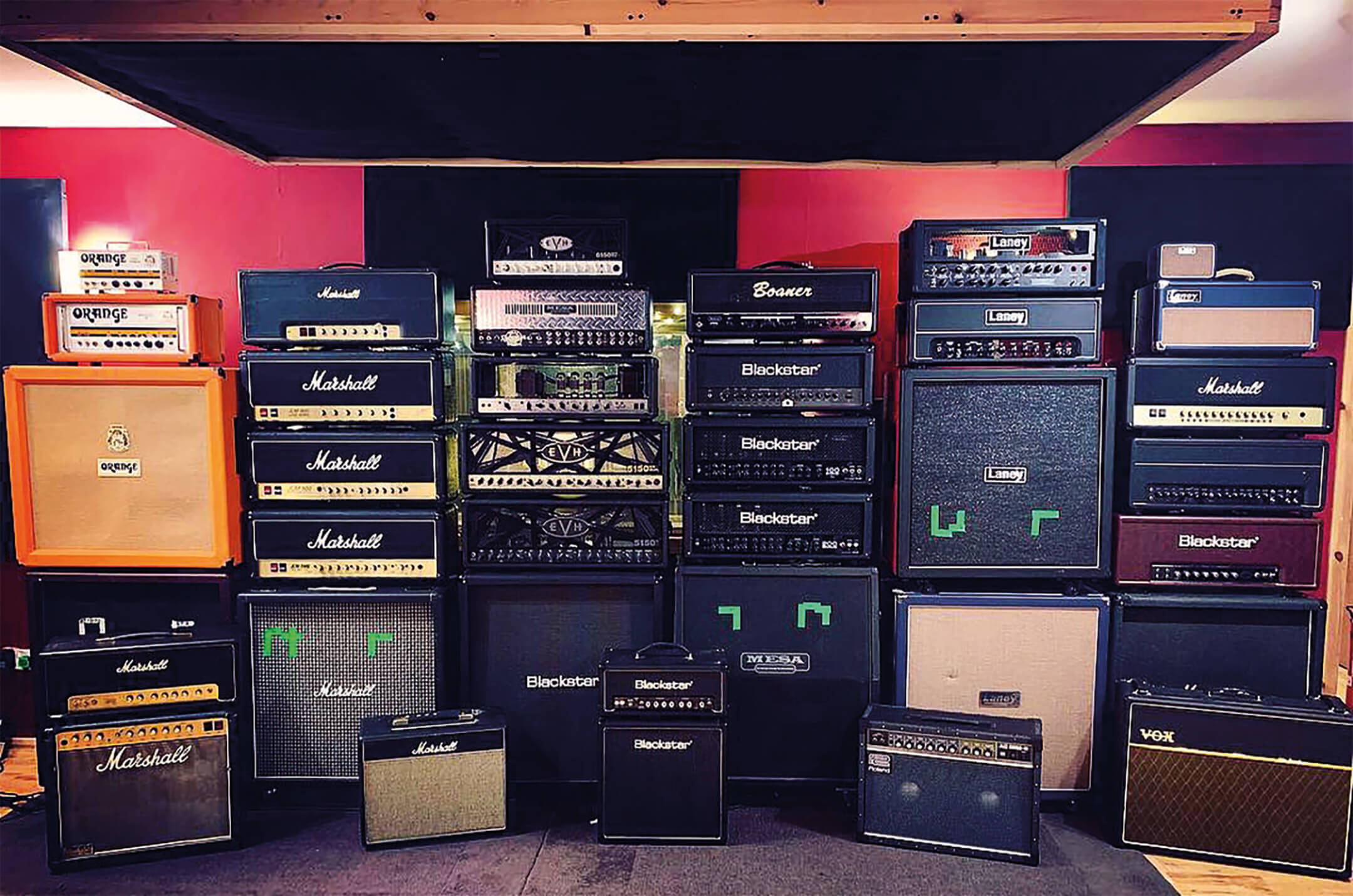
Second alphabet
His arsenal of physical hardware aside, Romesh isn’t averse to the world of in-the-box production. His DAW of choice, however, is an unlikely one: Steinberg’s Nuendo. “I’ve been a user since version one,” says Romesh. “I’ve stuck with it because I don’t want to have to think too hard about the DAW and, since I learnt Nuendo a long time ago, all the shortcuts are like a second alphabet to me. I have Pro Tools as well, because I get a lot of sessions sent to me to mix or continue tracking with, and I use that if I need to. But I love Nuendo’s features. It has a lot of stuff that’s only recently come to Pro Tools.”
It may be that a transition to an even more software-oriented approach is on the cards though. “I’m much more careful with what outboard gear I get because plug-ins are so advanced and easier to get hold of now. I love UA plug-ins, and the 1176 Blue Stripe is my favourite vocal compressor. The plug-ins I use right now are from Plugin Alliance; the SSL E-Strip is in all my mixes. I have a lot of the classic outboard covered, so when I’m getting new gear, it has to have a bold sound or be something I’ve struggled to do in-the-box. It needs to have a distinctive character.”
Room to grow
Romesh’s other major focus is Control Room, which he’s been running for the past year. Set up in 2019, it’s an online audio community for producers and engineers of all levels, whose members get access to monthly professional Q&As, livestreams, downloadable multi-track stems, deals on audio equipment and more.
“It was the result of me being asked so many questions about how I got certain guitar and snare sounds,” says Romesh. “I started thinking about an educational resource that could collect all those answers in one place. I thought it’d be awesome if I could make it bigger than just myself. Now we have the most amazing community, full of people learning alongside people who have made platinum records.”
With so many pro-level producers willing to share their knowledge, techniques, tips and tricks, Control Room has become a haven for those looking to discuss audio issues. Some even get more assistance than they expected. “There was a post where someone asked about getting Ed Sheeran vocal sounds on a track,” says Romesh, “and the producer, Joe Rubel, who made the Sheeran track he was referring to replied and said, ‘Here you go, here’s what I used’. He’d screenshotted the entire Pro Tools session. Recently, we had Mike Crossey tell us about how he works with The 1975 too.”
With communication largely limited to online forums, the community has proved especially effective in 2020. “It’s interactive and connective, especially when we’ve all been forced into lockdown,” says Romesh. “We’ve had more people join than ever. If you want to learn more stuff and connect with people, control-room.net is the place.”
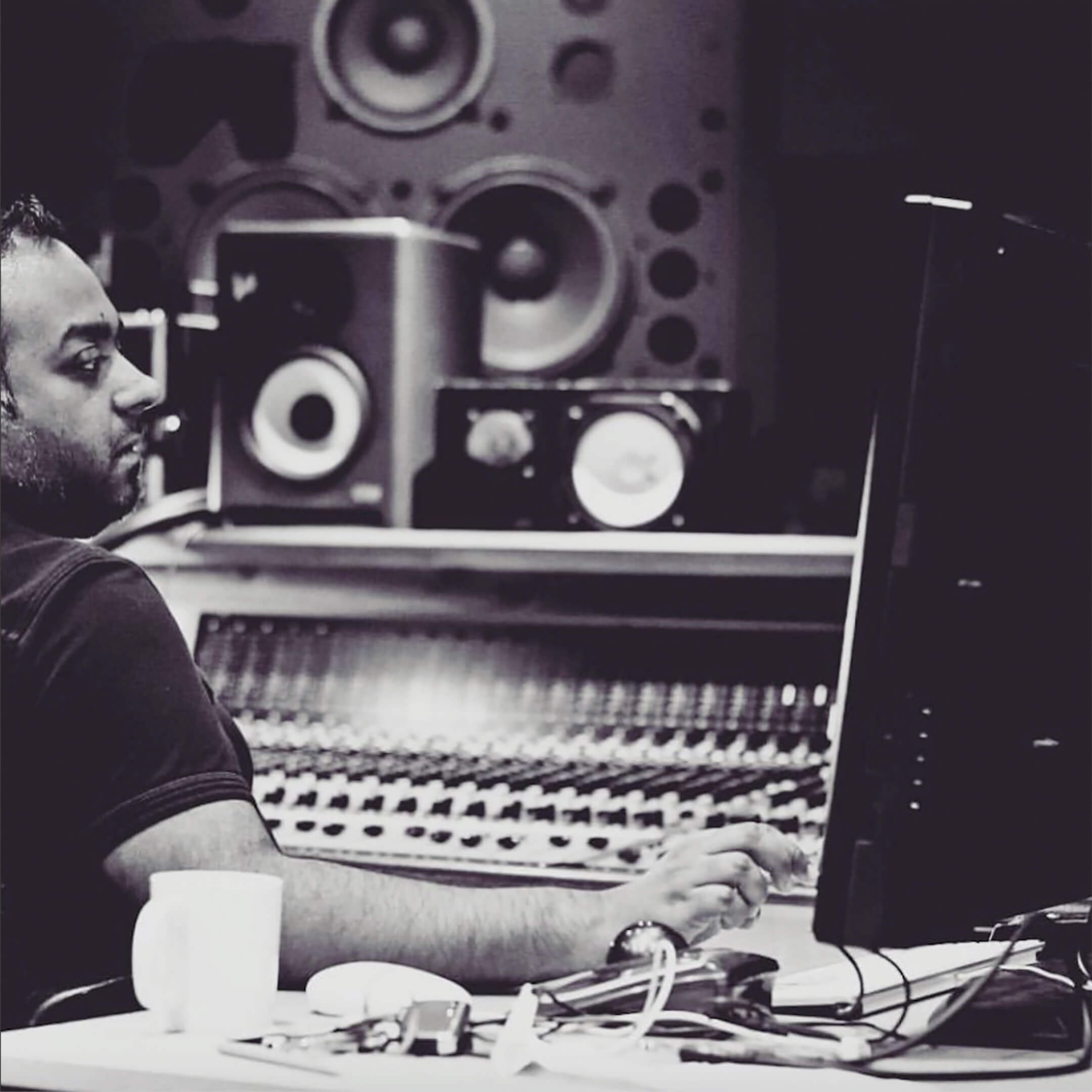
The long and short of it
For Romesh, the production of impeccable-sounding records is more than just a career, it’s an ever-rewarding lifestyle. But he’s all too aware of the potential pitfalls that young musicians and producers entering the game in 2020 can fall into. Despite the perils of streaming, diminished funds for touring and the unremittingly bleak outlook for the industry post-coronavirus, Romesh maintains optimistic about the future of his profession.
“In terms of producers and mixers – artists are always going to need great-sounding records,” he says. “From that point of view, I think we’ll be okay. Artists try and cut corners here and there but ultimately the music speaks for itself. If it doesn’t sound as good as the next song on the Spotify playlist, it’ll be discarded. It should sound the best it can. I’d say to anyone looking to get into the production game, just work hard to put out great-sounding work. You never know who’s going to listen to what you’ve done. As long as you make sure the last thing you did sounds excellent, then you’ll do well. You have no idea who’ll hear it. You need to keep that standard up.”
The next stage
Romesh also offers mastering services from his Long Wave studio. “There are a lot of mixers doing mastering when there’s no budget for it. I have a few mastering engineers that I use but I’m confident enough with my monitors and tools that I can take it on myself. But it’s awesome to get another set of ears on a mix; you get into such a bubble with it after a while.”
“When I do master, I use Nuendo. I use the FabFilter stuff – the Pro L2 limiter is great. I mix into a two-bus chain. That’s stuff I won’t take off for my mastering engineer; it’s part of the mix sound for me. I have a few things that create colour that will probably stay, regardless of whether it’s going to mastering or not. I don’t want that to be removed from it. Sometimes those processes are blurred.”
“Mixing on two-bus chains is better. I remember printing to DAT when I was trying to move to in-the-box production, and it was so difficult to get things to happen. As soon as I started using a two-bus chain and not going crazy with it, it became a lot easier to get somewhere in-the-box. It all comes down to your monitoring.”
Key gear list
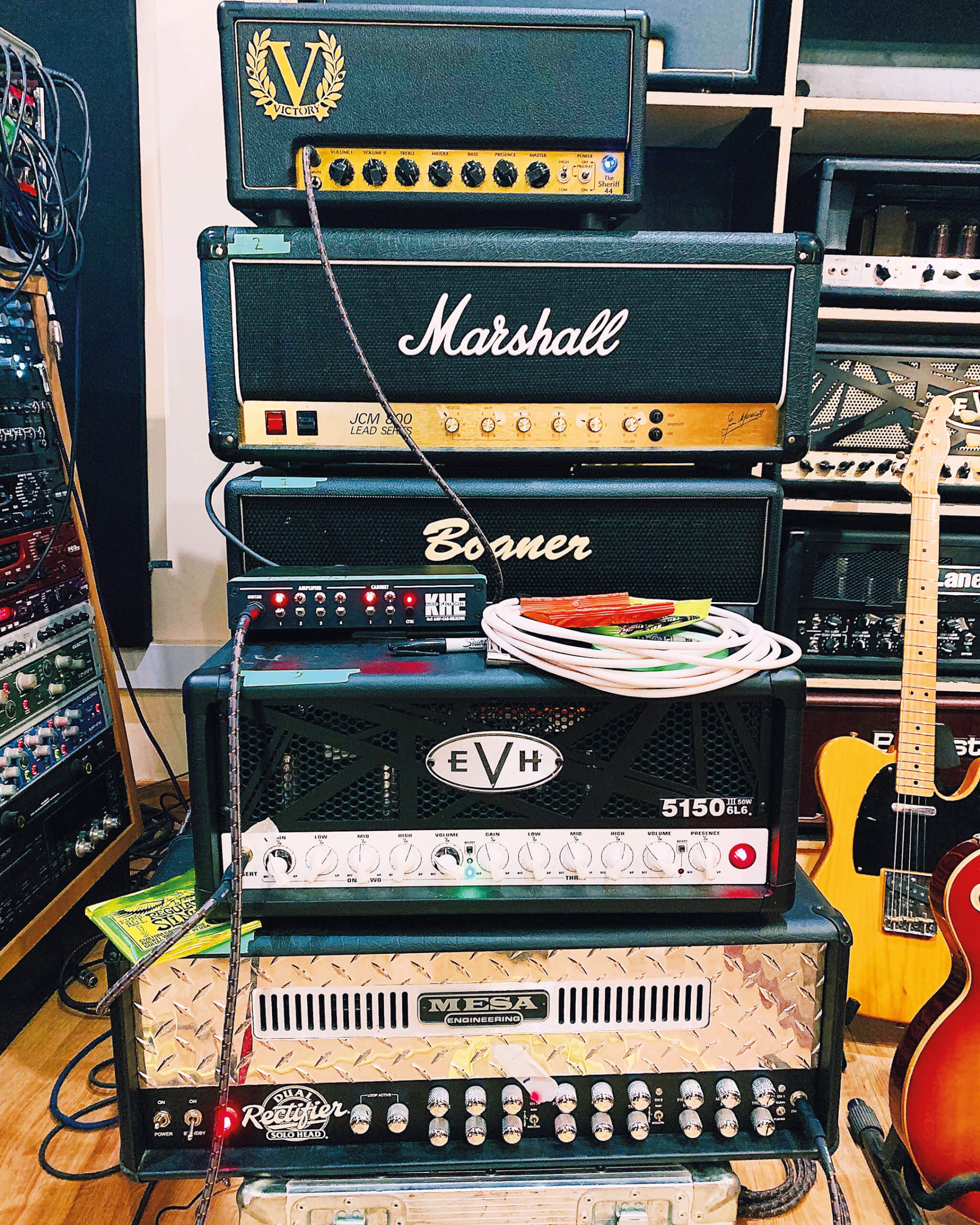
- Audient ASP 8024 Mixing Console
- Yamaha NS10 Monitors (with Genelec 7360 Subwoofer)
- Quested VS3208
- Antelope Orion 32 / UA Apollo Convertors
- Steinberg Nuendo
OUTBOARD GEAR
- Chandler TG2’s
- API 3142
- Heritage Audio 73’s
- Vintech 73i’s
- Empirical Labs Distressors / Fatso
- Retro 176
- Blue / Black 1176’s
- Universal Audio LA2A
- Tubetech PE1C
- Overstayer SVC
- Solid State Logic E Channel Strip / Fusion
- Standard Audio – Level’or / Stretch
- API 550 & 560 EQ’s
MICROPHONES
- Flea 47
- Josephson E22s
- Coles 4038’s
- Royer 121
- Beyer Dynamic 160
- JZ Microphones v67 / v47 / v11
- AKG D12
- Audio Technica 2500
- Electrovoice RE20
- Shure SM7B
- Neumann U87
For more features and artist interviews, click here.